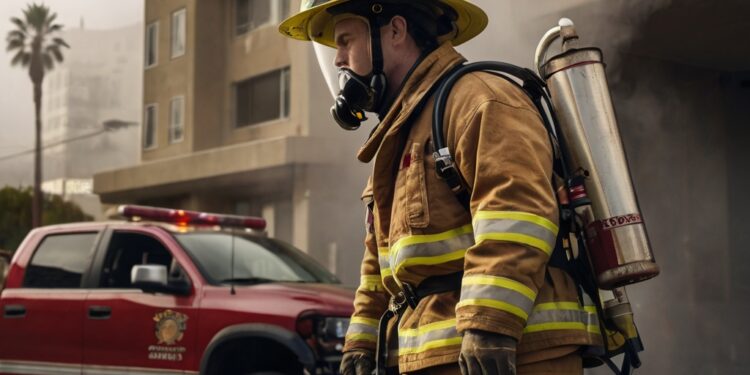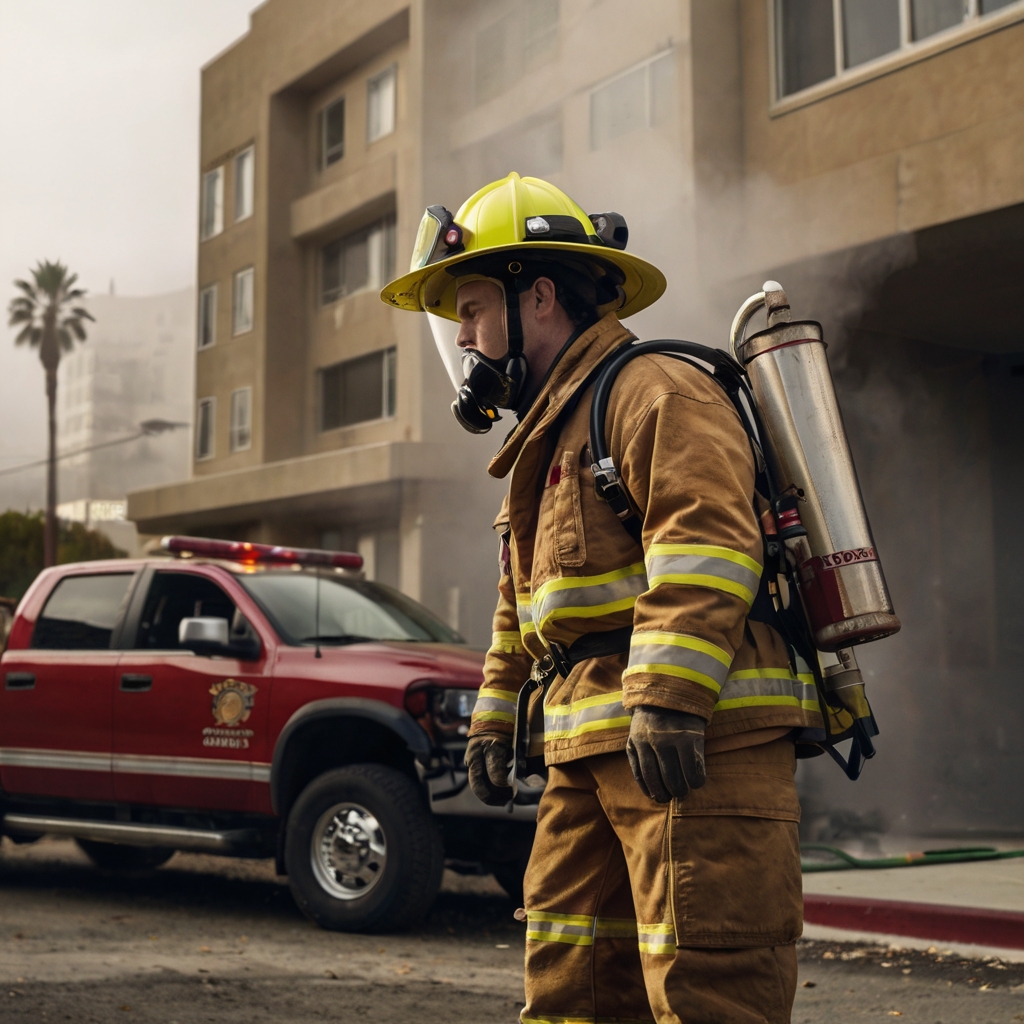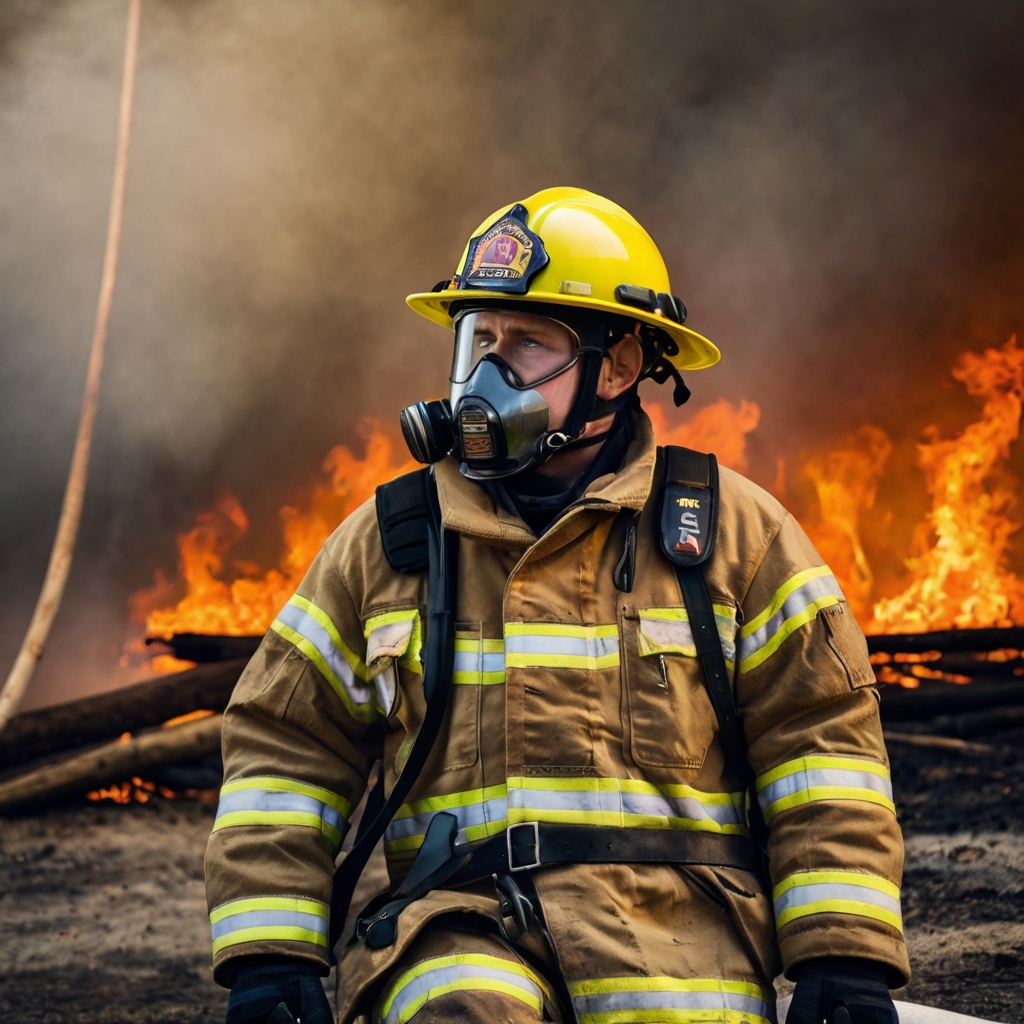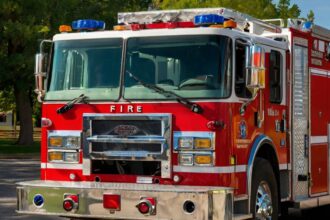How to Become a Firefighter in California

A California firefighter’s job extends far beyond putting out fires. Medical services make up more than 70% of emergency calls, which makes EMT certification a vital requirement for anyone wanting to join the fire service in the state.
The career path spans 3 to 7 years and is a chance to face exciting challenges. You’ll need specific qualifications: a high school diploma, valid driver’s license, and a passing score on the Candidate Physical Ability Test (CPAT). The competition runs high, and many departments use lottery systems because of the overwhelming number of applications.
This complete guide outlines the steps, requirements, and paths to become a firefighter in California. You’ll find everything about the simple qualifications, training programs, application process, and ways to grow your career in this demanding yet fulfilling profession.

Table of Contents
- 1 Basic Requirements to Become a Firefighter
- 2 Training Programs and Education
- 3 Different Paths to Firefighting
- 4 The Application Process
- 5 Timeline and Career Growth
- 6 Here are some FAQs on how to become a firefighter in California:
- 6.1 How long is firefighter school in California?
- 6.2 Is it hard to get hired as a firefighter in California?
- 6.3 What are the requirements to be a firefighter in California?
- 6.4 Do firefighters get paid well in California?
- 6.5 How much do you get paid in fire academy in California?
- 6.6 How many hours a week do firefighters work in California?
- 6.7 What city in California pays firefighters the most?
- 6.8 Is there a demand for firefighters in California?
- 6.9 What is the best state to become a firefighter?
Basic Requirements to Become a Firefighter
A career in firefighting starts with meeting specific requirements that California fire departments have set. You just need to meet several basic qualifications before you start your professional trip.
Age and education requirements
Different firefighting positions have different minimum age requirements. You can become a seasonal firefighter at 18 years old, while some permanent positions need you to be at least 21. You’ll need a high school diploma or GED from a U.S. institution. If you have a foreign diploma, it will need extra checks to verify its authenticity.
Physical fitness standards
Physical excellence is the life-blood of firefighting because of its demanding nature. The Candidate Physical Ability Test (CPAT) helps measure your physical capabilities. The test requires you to:
- Finish eight events in 10 minutes and 20 seconds while wearing a 50-pound weighted vest
- Pass every component since failing even one event means failing the whole test
- Show proper form and technique in each exercise
The departments also run basic fitness tests that check your aerobic capacity, muscular strength, and endurance. These tests usually include push-ups, air squats, pull-ups, and a two-mile run, among other exercises.
Required licenses and certifications
Getting the right certifications is a vital part of qualifying. You’ll need a valid California Driver’s License when appointed. You must also get EMT certification before the pre-background appointment phase. Out-of-state applicants need both National Registry EMT certification and a valid state EMT license.
The California State Fire Training (SFT) certification program sets minimum performance standards. This detailed system keeps records of your training achievements and lines up with state and national certification standards. The Fire Fighter 1 certification covers three levels of Professional Qualifications set by the National Fire Protection Association.

Training Programs and Education
Training programs are the life-blood of California’s firefighting education system and provide multiple paths to join this noble profession.
EMT certification process
The Emergency Medical Technician (EMT) certification is a basic requirement for anyone wanting to become a firefighter. The program takes 170 hours of required training that covers clinical experience and hands-on practice. Students learn vital skills like cardiac assessment, respiratory emergency management, and basic airway procedures. Getting certified involves three main steps: you complete an EMT course, pass the National Registry of Emergency Medical Technicians examination, and get California EMT certification.
Firefighter academy options
California’s fire academies give detailed training in different formats. Full-time academies run Monday through Friday from January to May and deliver an intensive learning experience. Working professionals can attend part-time extended formats with evening and weekend classes. Students who complete these academies earn several certifications:
- California Firefighter I Certification
- Auto Extrication and Hazardous Materials First Responder
- Rescue Systems I and Fire Control III
- ICS 200 and Low Angle Rescue
College degree programs
Higher education paths let you specialize deeper in fire science. The Bachelor of Science in Fire Protection Administration and Technology needs 120 semester units and develops both technical and administrative skills. Associate degree programs typically need 64.5 credits and focus on fire protection organization, emergency medical services, and fire behavior studies.
California State University, Los Angeles has a degree completion program that lets students build on their community college education. The curriculum strengthens administration and leadership skills and prepares graduates for advanced fire service positions. Fire departments of all sizes support continuing education through specialized certifications and advanced training programs.
Different Paths to Firefighting
California’s fire service provides a variety of career paths with unique opportunities and requirements. Volunteer emergency responders make up 73% of the fire service across the US. This creates multiple entry points for aspiring firefighters.
Career firefighter route
Municipal fire departments employ career firefighters as full-time professionals. The preparation and training typically takes 3-5 years. Many departments prefer candidates who begin as reserves or volunteer firefighters because this experience gives them valuable hands-on training. Career firefighters must meet high physical fitness standards and complete continuous training to advance through the ranks.
Volunteer firefighter opportunities
Volunteer firefighting is a great starting point for people interested in fire service. These positions don’t require prior experience, but candidates must meet specific criteria:
- Be at least 18 years old
- Hold a valid driver’s license
- Complete basic fire and EMS training
- Live near the fire district
- Maintain a clean criminal record
Department needs determine time commitments, especially for call response and training requirements. Most departments pay for training costs and firefighting equipment, though the position usually remains unpaid. Some departments give stipends or expense reimbursements.
Wildland firefighter path
Wildland firefighters control and prevent wildfires in wilderness areas. These positions often run seasonally from May to September. The role requires specialized training, including S-130/S-190 Basic Wildland Firefighter Training and Introduction to Wildland Fire Behavior courses.
Physical fitness is vital for wildland firefighters. Candidates must pass the Work Capacity Test, also known as the ‘Pack Test.’ This involves carrying a 45-pound pack over a 3-mile course in 45 minutes or less. The job often requires long periods away from home when responding to remote fires or participating in fire prevention activities.
Wildland firefighter positions continue to grow due to longer fire seasons and more severe fires. These professionals respond to fires and perform significant tasks. They analyze fire weather data, maintain equipment, and conduct regular training sessions to stay current with fire service techniques.
The Application Process
Getting a firefighter position in California needs detailed preparation in several testing areas. The selection process uses a well-laid-out evaluation system to find the best candidates for this vital public service role.
Written exams
The Firefighter Candidate Testing Center (FCTC) Written Test challenges candidates with 100 multiple-choice questions. The test covers four key areas:
- Recall and Comprehend Verbal and Visual Information (20 questions)
- Apply Mechanical Reasoning (25 questions)
- Solve Mathematical Problems (20 questions)
- Recall and Comprehend Technical Information (35 questions)
You get 2.5 hours to finish the test. Local fire departments offer orientation sessions that help candidates prepare better. Students who take prep classes usually score higher than those who study alone.
Physical ability tests
The Cal-JAC Candidate Physical Ability Test measures your physical fitness. You must complete eight different events in 10 minutes and 20 seconds while wearing a 50-pound weighted vest. The stair climb needs an extra 25-pound weight to match carrying a hose pack.
You should wear long pants, a t-shirt or sweatshirt, and closed-toe footwear for the test. Fire departments let you get familiar with the equipment through orientation sessions. You can schedule practice runs after completing two orientation sessions.
Background checks
The background check looks at many parts of your history. Departments can’t ask about criminal history until they make a conditional job offer. After the offer, investigators look at:
Your personal history includes where you lived for the past 10 years, work records, and military service papers. They review your financial responsibility through credit checks. Everything from driving records to school transcripts gets a full review.
Investigators might check your social media and want access to your online accounts. You’ll need to explain any past issues clearly. This review makes sure you have good character and fit well in public service.
Timeline and Career Growth
A career in California’s fire service just needs dedication and patience. We found that aspiring firefighters should expect 3 to 7 years of persistent effort to secure a position. Some candidates reach their goals earlier, while others might take 10-15 years to get their desired role.
Average time to become a firefighter
Each candidate’s experience varies by a lot based on individual circumstances and department requirements. Most candidates take 2 to 5 years to complete qualifications and secure employment. The timeline has these key phases:
- Initial training and certification: 6-12 months
- Application submissions: Often to 50+ departments
- Academy completion: 3-6 months
- Probationary period: 6 months to 2 years
Successful firefighters submit applications to multiple departments at once. One documented case showed applications to upwards of 50 different fire departments in California and other states. Random lottery systems determine interview candidates in about 20 out of 50 departments.
Advancement opportunities
California’s fire service has many paths for growth. Firefighters can move up to advanced positions after completing 4 years of full-time paid fire suppression experience.
The career ladder typically has:
- Fire Captain
- Guides fire companies and task forces
- Directs fire suppression and prevention activities
- Fire Battalion Chief
- Requires Bachelor’s degree
- Minimum 4 years experience as Fire Captain
- Manages teams and oversees operations
- Specialized Roles
- Arson Investigator
- Hazardous Materials Specialist
- Conservation Worker
Firefighters can also advance through California’s certification system. The state offers these benefits:
- CalPERS managed pension
- Health, dental, and vision coverage
- Paid holidays and accrued leave
- Diversity Equity Inclusion Program
- Certified Bilingual Positions with pay differentials
Personal motivation and departmental opportunities shape career development. The California State Fire Training (SFT) system tracks achievements that match state and national certification standards. Many departments support continuing education through specialized certifications and advanced training programs because success comes from continuous learning and dedication to the profession.
A career as a California firefighter requires dedication, preparation, and persistence. The experience typically takes 3-7 years. The career rewards you with excellent advancement opportunities and complete benefits packages.
Aspiring firefighters can choose from multiple entry points. Career departments, volunteer positions, and wildland firefighting roles each provide distinct advantages and learning opportunities. Many successful candidates take several paths at once. They apply to many departments while they gain valuable experience through volunteer work.
Physical fitness, continuous education, and steadfast dedication are the life-blood of this noble profession. Competition is fierce and requirements are rigorous. Determined candidates who meet the basic qualifications can build fulfilling careers in fire service. They must complete required certifications and maintain high standards of excellence.
California’s firefighting profession adapts constantly to new challenges and technologies. Long-term success awaits those who welcome continuous learning and maintain peak physical condition. Public service dedication positions firefighters for growth in California’s fire departments. This challenging career path lets you serve communities and save lives.
Here are some FAQs on how to become a firefighter in California:
How long is firefighter school in California?
Firefighter school in California typically lasts between 12 to 16 weeks, depending on the program. The curriculum combines classroom instruction and hands-on training, including physical fitness, emergency medical procedures, and firefighting techniques. This is part of the process for how to become a firefighter in California, equipping individuals with the necessary skills to handle the demands of the job.
Is it hard to get hired as a firefighter in California?
Getting hired as a firefighter in California can be quite competitive due to the high demand for these professionals. While it can be challenging, particularly in urban areas, candidates who complete the required training, certifications, and gain experience, such as volunteering, have a better chance. It’s essential to understand how to become a firefighter in California and work on building a strong resume with relevant experience and education.
What are the requirements to be a firefighter in California?
To become a firefighter in California, you typically need a high school diploma or GED, a valid driver’s license, and to pass physical and medical exams. Candidates must also complete a fire academy program and earn certifications such as EMT. Additionally, knowing how to become a wildland firefighter in California can help in specialized areas, as it involves different qualifications, such as wildland firefighting training.
Do firefighters get paid well in California?
Firefighters in California are generally well-compensated, especially when compared to the national average. Pay varies depending on the city, experience, and rank, but it can range from $50,000 to over $100,000 annually. Understanding how hard it is to become a firefighter in California helps you appreciate the high pay, which reflects the demanding nature of the work.
How much do you get paid in fire academy in California?
While attending fire academy, recruits typically do not receive a full salary. However, some departments offer stipends or pay for recruits during training, especially if they are already hired by the department. The compensation varies based on the academy and the department’s policy, but this is an important step for those wondering how to become a firefighter in California.
How many hours a week do firefighters work in California?
Firefighters in California typically work long hours, with a standard firefighter schedule often being 24-hour shifts followed by 48 hours off. This results in an average workweek of about 56 hours. Understanding the firefighter work schedule is important for those looking into how to become a firefighter in California, as it demands physical endurance and flexibility.
What city in California pays firefighters the most?
Cities such as San Francisco, Los Angeles, and San Jose offer some of the highest salaries for firefighters in California. San Francisco, in particular, is known for its competitive pay scale, which can exceed $100,000 annually for experienced firefighters. Knowing how to become a firefighter in California and choosing a city with high pay can make a significant impact on a firefighter’s income.
Is there a demand for firefighters in California?
Yes, there is a consistent demand for firefighters in California due to its large population, frequent wildfires, and growing urban areas. With the right qualifications and experience, candidates can find ample opportunities. Understanding how to become a wildland firefighter in California can be especially valuable, given the state’s need for specialized professionals to manage wildfire emergencies.
What is the best state to become a firefighter?
While California offers many opportunities, including competitive pay and a range of firefighting positions, the best state to become a firefighter depends on personal preferences and goals. California is known for its diverse firefighting roles, including wildland firefighting, making it a great state for those interested in these specific career paths. Knowing how to become a firefighter in California provides access to both urban and wildland firefighting jobs, which are in demand.

